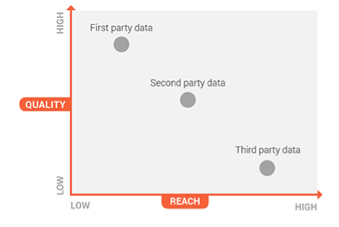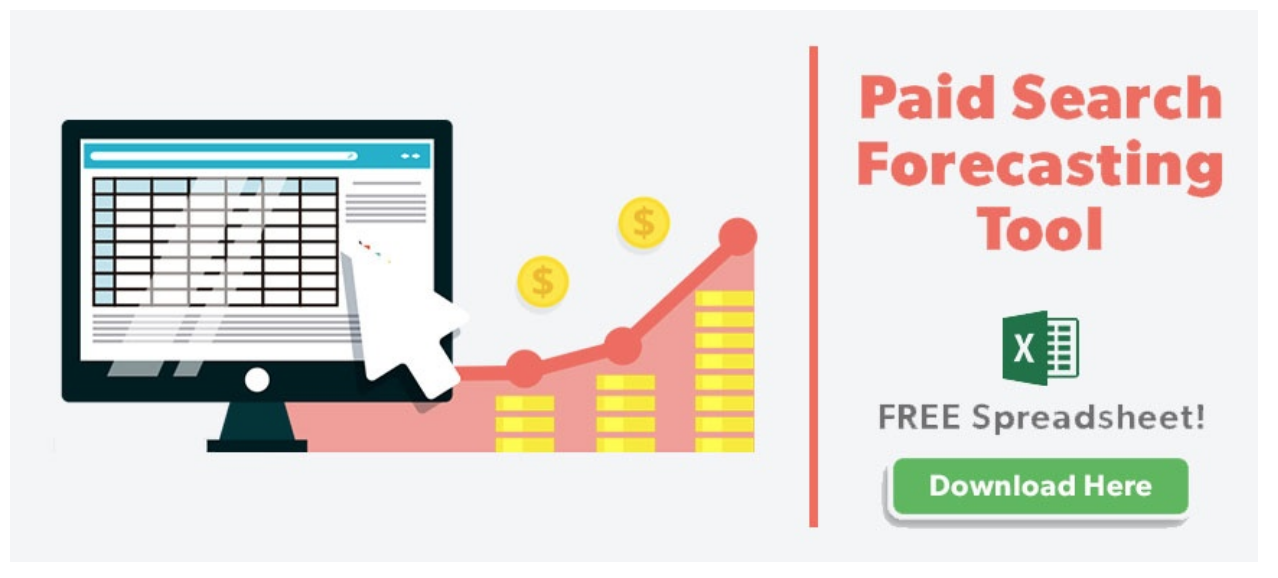Using Programmatic Data to Optimize Search
What is Programmatic Advertising?
Programmatic is no longer just a buzzword in today’s digital marketing landscape. Over the past 5 years, it’s become a major avenue of acquisition and branding for both B2b and B2C brands.
State of Digital defines it as: “The algorithmic purchase and sale of advertising space in real time. During this process, software is used to automate the buying, placement, and optimization of media inventory via a bidding system. Automating the process means that it can be done in real time and doesn’t rely on the human touch, manual insertions and manual trading.”
However, programmatic isn’t completely automated. People are still a necessary part of the process. Some programmatic channels, like video or native, offer less automation than others, like desktop display advertising. And people are still crucial to making the right strategic targeting and performance optimization decisions.

The ecosystem of programmatic can be a bit confusing to understand. It involves a complex network of DSPs, DMPS, trading desks, ad network, ad platforms, etc. For the purposes of this post, let’s focus on how we can target use our learnings in this field to better guide your PPC efforts.
Related: What is Programmatic Advertising?
Before we dive into that, let’s review a few more key aspects.
Where Does the Data Come From?
Programmatic is the ultimate way to arrange mass amounts of data into audiences that are meaningful to your brand or business. Data is at the very core of programmatic and marketers must understand the key differences between data types to make the most of them in their campaigns.
These are the main data types:
First-Party Data: First-party data is the data you collect and own from your own audience. As a company, you personally own this information about your consumers because it is collected and created from the systems you use. This is what makes first-party data the most powerful form of data you can own.
Second-Party Data: Second-party data is data that is not collected directly from your customers. Instead, it’s derived from a partner’s first-party data. You can access this data by making an arrangement with a partner to share their customer data with you. This sharing of high-quality first-party data gives you access to audiences you might not otherwise be able to reach. This data can be of similar quality to first-party data and allows you to have a greater audience pool.
Third Party Data: Data that’s collected by an outside entity. Third-party data is usually collected anonymously from other entities and sold to additional platforms. Third-party data can come from a variety of places, including surveys/panels, opt-in online tracking, cookie-based tracking, registration data, public records, and offline transaction data such as loyalty cards. The nature of this data source makes it the lowest quality out of the three but has the greatest reach.

Types of Targeting
- Location: Serving ads to users based on their location data.
- Audience: Purchasing and pushing ads to a particular audience segment. Can take into account other signals such as behavioral, intent, demographics, etc.
- Contextual: Reaching and targeting new users based on the content of the page where the ad is served.
- Lookalike Modeling: Prospecting tactic that targets audiences who share similar characteristics or behaviors in hopes of identifying new converting segments.
- Behavioral: Targeting users based on certain actions they have taken on a website.
- Cross-Device: Identifying a user by matching different data points across multiple devices and then serving ads across those devices.
- Demographic: Serving ads based on the user’s demographic information such as age, gender or income.
- Intent: Somewhat a subset of behavioral targeting, involved looking at other signals such as previous behaviors, search queries, and social media activity.
Types of Programmatic Retargeting
- Site Retargeting: Ads served to person based on web page visited.
- Search Retargeting: Target based on previous search history.
- Email Retargeting: By way of cookies, you can target users who have opened or taken a certain action in an email.
- CRM Retargeting: Involves matching CRM data with online cookie data to match users in a database
- Dynamic Retargeting: Ad creative served dynamically based on the criteria the user viewed during a previous page visit.
Main Types of Programmatic Ad Inventory
- Auction-Based: Ad inventory available to purchase in real time on an action model.
- Reserved: Ad space sold on a deal basis to a specific advertiser
- Unreserved: Ad space sold through an open marketplace
- Fixed Pricing: Ad inventory with a fixed price
Related: Benefits of Programmatic Advertising
The Impact of Programmatic and PPC
So how do we tie all this together? Using programmatic data to inform your overall paid search strategy can provide a competitive advantage and improve results. This can be translated into keyword strategy, ad copy, ad extensions and landing pages. The more you know about your target audience and what resonates with them, the better your chances will be as you try to appeal to them. Programmatic is rich in data. For instance, learning the interests, likes, dislikes, geographical location and gender of customers can help determine keyword buying and ad messaging strategies.
Related: Programmatic Display 101
This channel is a great way to quickly add new customers to your sales funnel. By tapping new audiences, you can achieve increases in both branded and non-branded searches, which means your overall PPC traffic and resulting conversions can grow as a result. In other words, using programmatic can increase your total SEM traffic and conversions faster than conventional account optimizations.
With regards to display and the GDN, programmatic can serve as a huge compliment. Although the GDN currently reaches about 90% of the websites out there, for programmatic the number is closer to 99%. This can increase your total reach significantly. Due to the vastness of this inventory availability, marketers are not 100% reliant on Google inventory to reach their target audience in an efficient way. You can use learnings on the programmatic side to identify placements, websites, and audiences that might resonate well with your GDN audience.
There are a lot of different ways you can get creative to integrate your PPC campaigns with programmatic! What other strategies have you used that have worked well?



















